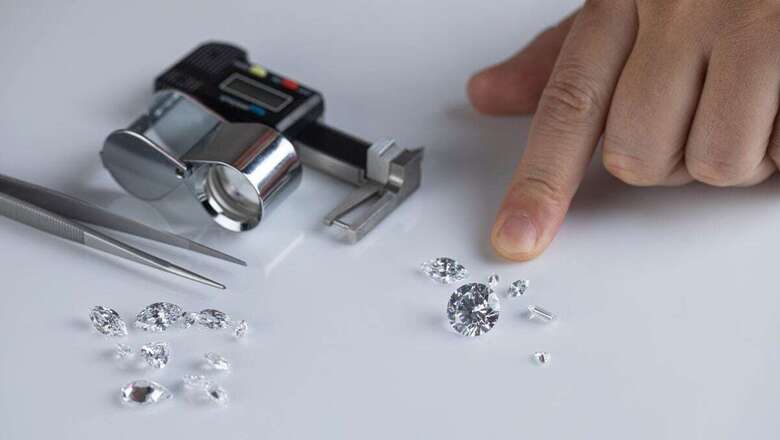
views
Innovation is often not associated with jewelry as it has traditionally operated in a similar manner for the past century without much change. However, in today’s context, it’s crucial to identify the underlying inefficiencies in the system before pursuing innovation. Creating jewelry without maximizing its utilization is wasteful and unsustainable at its core.
“For instance, in India, 90-95% of jewelry is made with gold. However, gold is extremely destructive to the environment. Behind a single 22-kt gold ring is 20,000 kilos of toxic cyanide and mercury waste. That’s 6 billion tonnes, annually. On top of that, gold mining generates over 100 mn tonnes of carbon emissions. And beyond this, there is widespread ecological destruction. India’s contribution to the global footprint is approximately a whooping one-third,” says Vivek Ramabhadran, Founder & CEO, Aulerth.
One of the key inefficiencies in the jewelry industry is the excessive waste generated during the production process. Traditional jewelry production often involves significant material wastage, as precious metals and gemstones are cut, shaped, and discarded to create the desired designs. This not only results in the loss of valuable resources but also has environmental implications, including land degradation, water pollution, and carbon emissions from mining and processing activities.
Another inefficiency is the low utilization of jewelry. Many people own jewelry that they rarely wear, resulting in underutilization of these valuable pieces. Additionally, jewelry trends and fashion preferences change over time, leading to outdated designs and reduced demand for certain jewelry items. As a result, jewelry often ends up sitting unused in drawers or ultimately being discarded, contributing to unnecessary waste and environmental impact.
To address these inefficiencies, innovation in the jewelry industry can focus on several areas. One approach is to adopt more sustainable and responsible practices throughout the entire jewelry supply chain, from mining and sourcing of materials to manufacturing, distribution, and retail. This can include the use of recycled precious metals and gemstones, ethical sourcing practices, and environmentally friendly manufacturing processes such as 3D printing and laser cutting that minimize material wastage.
Now, from a consumer perspective, there is a clear gap as well. “Four out of five women acknowledge that when it comes to a special dress-up occasion, they struggle to find the right jewelry to wear – it doesn’t match their outfits, or their sensibilities. Gold jewelry is cumbersome to store and travel with. Costume jewelry is largely poor in quality, and not reliable,” adds Ramabhadran.
What if jewelry could be experienced in a totally different way?
Ramabhadran shares how innovations like exploring new materials, technologies, and design concepts in sustainable jewelry is the way forward.
- From two-three purchase moments in a woman’s lifetime, which then mostly lands up in a locker and then ties her down by limiting her options to a Netflix-like offering where a woman gets to wear what she wants, when wants, and for however long she wants to.
- From showcasing preciousness via materials, which are destructive for the planet to a fusion of high design, and fine craftsmanship all over recycled reclaimed materials, but still with lifetime reliability – hence with a significantly lower footprint.
We’ve all been reading about lab diamonds – the best innovation in that space is the case where carbon is extracted from the atmosphere and then translated in an energy-effective process to the finished product. Could there be other materials that provide the noble (non-reactive) properties of gold, but with a significantly lower footprint?
And then on top, what are the different ways to provide that personalized high-trust jeweler experience in a faster, lower-cost way with higher reach – via technology? The technology leveraging AR/VR for trials is not mature yet; so, this aspect currently is about marketing automation, while retaining a personal concierge service context.
Innovative business models such as jewelry rental, leasing, or subscription services can also be explored to promote a circular economy approach and extend the lifespan of jewelry by enabling multiple users to enjoy the same piece over time. Additionally, leveraging technology, such as blockchain, can enhance transparency and traceability in the jewelry supply chain, ensuring responsible sourcing and production practices.
Here’s a sparking bright and cleaner future for jewelry!
Historically, jewelry has been pushed in India as an investment option, and hence the utilization of the product being low was never a point of contention. However, today there is an increasing awareness that jewelry is ineffective as an investment choice. Hence, the real drivers of value are – self-expression, a capture of time with design and craftsmanship.
The overarching question is – do we really need to destroy the planet towards this?
Read all the Latest Lifestyle News here


















Comments
0 comment